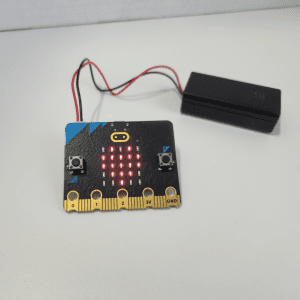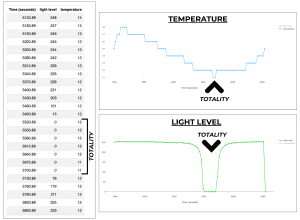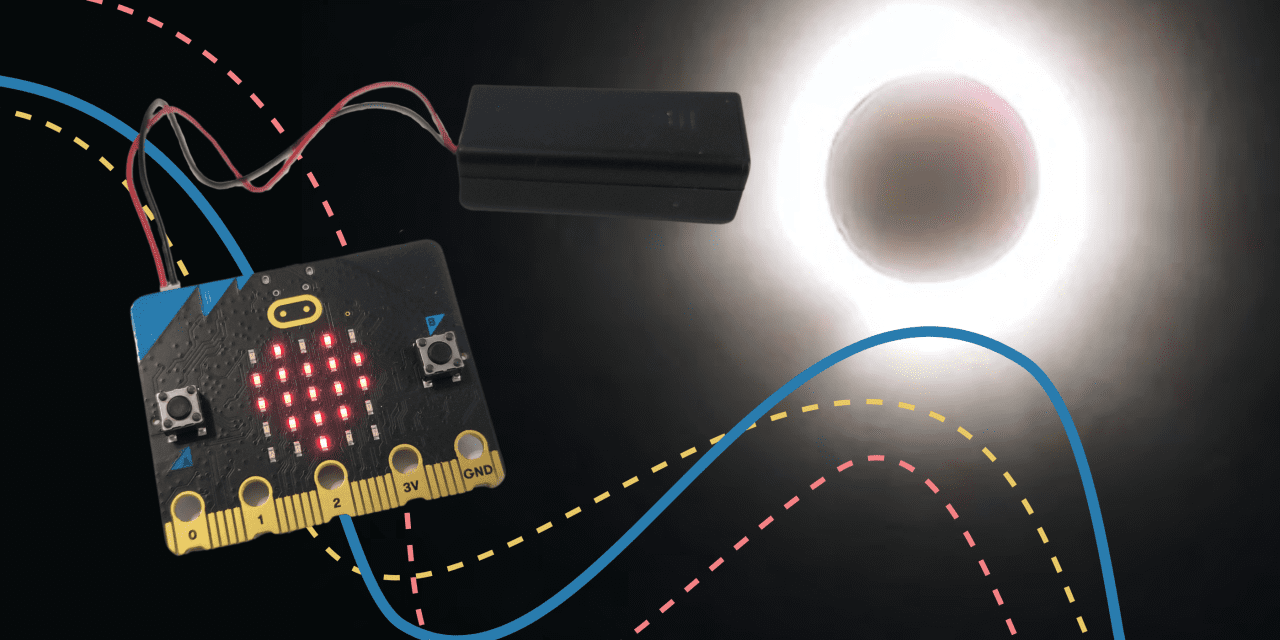 Last week’s total solar eclipse was a unique experience for many of us in Quebec. In the middle of the afternoon, the sky grew dark, birds went quiet, and the temperature dropped. This phenomenon, totality, didn’t last more than a few minutes and while many captured the moment with cameras and phones, some of us at LEARN used Micro:bits to capture this notable event.
Last week’s total solar eclipse was a unique experience for many of us in Quebec. In the middle of the afternoon, the sky grew dark, birds went quiet, and the temperature dropped. This phenomenon, totality, didn’t last more than a few minutes and while many captured the moment with cameras and phones, some of us at LEARN used Micro:bits to capture this notable event.
Micro:bits are small programmable devices that are popular tools for exploring computer programming and building prototypes, robots, and other creations. Micro:bits have sensors that can measure things such as temperature, light, sound, and movement. Using the data logging extension, we can use these sensors to record various measurements. Then, by plugging the Micro:bit back into the computer, we can extract the data that has been recorded into a table which can be downloaded as a csv file for further analysis. The Micro:bit site also generates a visual preview of the data. 
On the morning of April 8, I took a few minutes to code my Micro:bit using the MakeCode site so that it would automatically log the temperature and light level at 30-second intervals. I then brought my Micro:bit outside with me as I enjoyed the eclipse from my backyard. With the Micro:bit sitting in the sun, I pressed the button to begin my program at approximately 3:00 pm and let it do its job. After enjoying the excitement of totality and the end of the eclipse, I brought my Micro:bit back into my home and plugged it into my computer. Opening the data file, I was pleased to see that the Micro:bit had captured both the drop in light and temperature as the moon blocked the sun. It was exciting to relive the moments of totality through the data.

Micro:bits are great tools to bring into the classroom and to bring outdoors. They offer endless and diverse possibilities for learning activities. Micro:bits can be coded to collect data automatically and manually. Using the Micro:bits in this way can help students learn about data collection and analysis, computer programming, and so much more. The Micro:bit site shows you how to record data about traffic or environmental conditions and create devices like fitness trackers. These can be great places to start. While we won’t experience another total solar eclipse in Quebec until after 2200, there are still many possibilities to explore data logging with the Micro:bit. How else can you use data logging in the classroom? What real-world applications can you and your students find to measure?





thank you
i like ur article so much